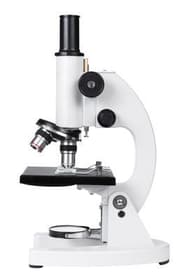Laboratory conditions to improve the IVF outcome

Creating the embryos with the high potential to implant and causing an ongoing pregnancy is the primary goal in IVF.
Our aim is transferring the healthy single embryo which results in a singleton pregnancy ending in full term. This can be only achieved in optimal laboratory conditions within the IVF process. Therefore, it is extremely important to improve the laboratory strategies to maximize success in assisted reproductive techniques.
Morphological selection of the embryo is still the most commonly used method since the beginning of IVF. Good laboratory conditions and meticulous quality control allow culturing embryos until day 5 to select the best–morphology blastocyst either after fresh transfer or following freezing–thawing process.
This means that the appearance of the embryos and their developmental rate, assessed under a light-microscope, is the current method for determining embryo quality. It has been shown that although some information about an embryo's competence (ability to result in a live birth) can be determined by these criteria, they are certainly not perfect. Many embryos that look normal may not implant. Many good-looking embryos, if tested with PGS, will be found to be genetically abnormal, and genetically abnormal embryos usually do not implant, or lead to early miscarriage.
However, as embryo evaluation relies on single daily observations throughout culture, assessing transitional and real dynamic changes which may affect the implantation potential of an embryo is difficult. That’s why continuous monitoring of embryo development from fertilization to blastocyst stage by automated time-lapse imaging has offered the possibility to determine precise embryonic cell division times. This may allow the identification of embryos with a very low probability of developing to the blastocyst stage or to implant, as for embryos cleaving directly from the 1 to 3 cells or from 2 to 5 cells within less than 5 h. Moreover, the synchrony of dividing cycles seems to be predictive for blastocyst development leading to the development of algorithms which may allow the identification of embryos with a highest implantation capacity.
Although the incidence of chromosomal imbalances is higher in embryos that develop poorly, appearance alone cannot determine genetic normality. Embryo genetic abnormalities increase markedly as the women from whom the eggs are retrieved and the embryos formed, get older. Research has shown that in younger women, up to 30% of eggs and embryos produced from IVF are genetically abnormal, and this increases to over 55–60 % in women over 40. With the age of women referred to IVF increasing, abnormality screening by comparative genomic hybridization (aCGH) gains importance in the selection of genetically normal embryos and thus in obtaining viable pregnancies. Short time ago, small RNA fragments (micro RNAs) have been shown to control gene expression and are promising candidates that may be in the future critical in embryo selection.
In adjunct to morphological evaluations, many waste products in the culture media which are called metabolomics (pyruvate, lactate, glucose, amino acids) have been proposed to be potential predictors of healthy embryos. Some studies also have demonstrated a difference between embryos that implant and those that do not. Besides this metabolic approach in the assessment of embryo viability, oxygen respiration measurements also may give an idea on the metabolism of the eggs and further discriminate embryos having the capacity to implant.
However, as ready-to-use devices giving reliable results are still lacking in the clinic, these techniques are still experimental. In the end, although many promising techniques exist, we must always be very careful about the basics of an IVF–embryology laboratory, good air quality, stable culture conditions and carefully-controlled operating procedures.